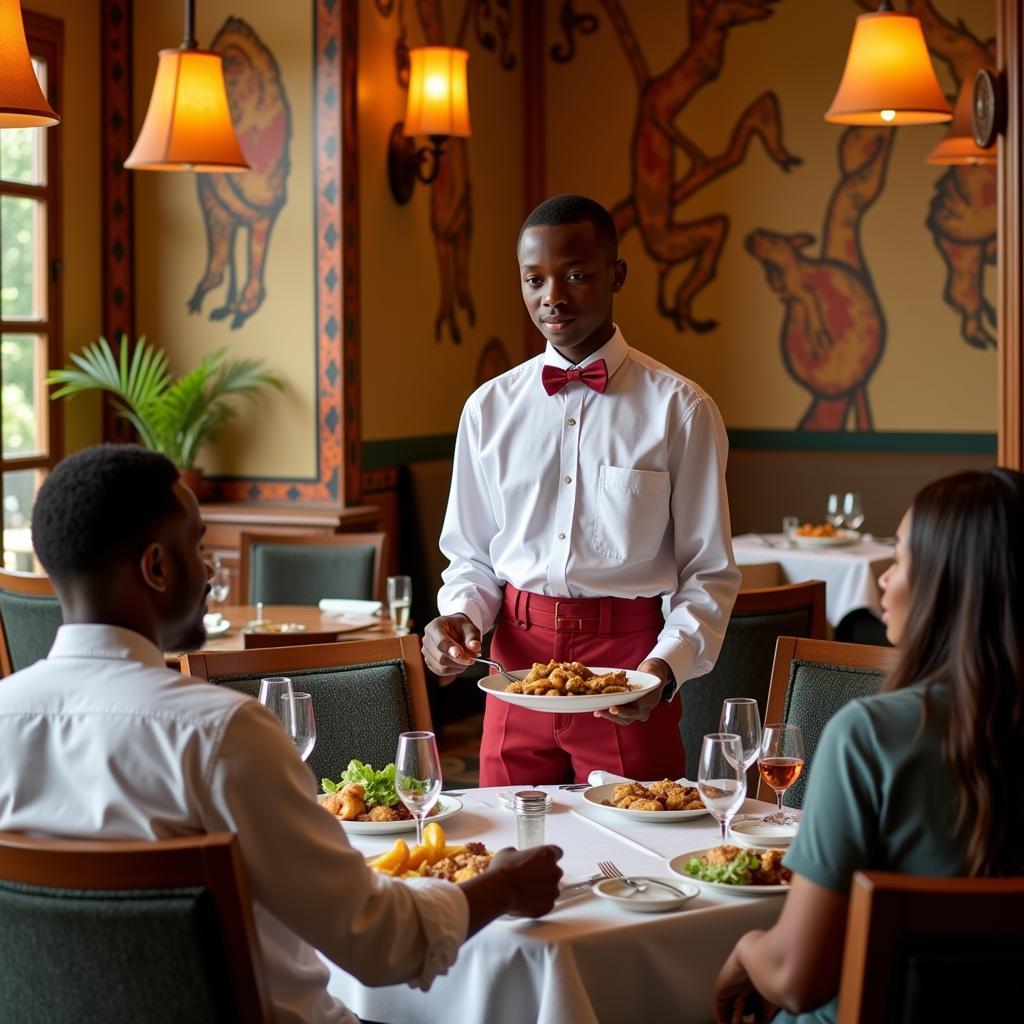Exploring African Characters in Beauty and the Beast
The beloved fairytale of Beauty and the Beast has captivated audiences worldwide for generations, but discussions about African characters in this classic story are often overlooked. While traditional versions of the tale don’t prominently feature characters of African descent, the story’s universal themes of love, acceptance, and inner beauty resonate deeply with diverse cultures, including those across the African continent. This exploration delves into the potential for more inclusive representations, examining the impact and importance of incorporating African characters and influences within the Beauty and the Beast narrative.
Reimagining a Classic: The Potential for African Characters
The absence of explicitly African characters in most Beauty and the Beast adaptations presents a unique opportunity for reinterpretation. Imagine a version of the story set amidst the rolling savannas of East Africa, where a Maasai warrior, transformed into a lion-like beast, encounters a young woman renowned for her intelligence and kindness. Or picture a retelling inspired by West African folklore, with a powerful enchantress cursing a Yoruba prince to live as a creature of the forest, only to be redeemed by the love of a woman who sees beyond his outward appearance.
These reimaginings would not only introduce characters reflective of Africa’s rich cultural tapestry but also provide a platform to showcase the continent’s diverse traditions, languages, and beliefs.
Beyond Representation: Infusing African Culture into the Narrative
The integration of African characters into Beauty and the Beast extends beyond mere representation; it offers an opportunity to infuse the story with the vibrancy of African culture.
- Music: Imagine the Beast’s transformation scene underscored by the powerful rhythms of West African drumming, or Belle and the Beast’s iconic ballroom dance set to the melodies of the kora, a traditional West African harp.
- Costumes: Picture Belle adorned in the colorful fabrics and intricate beadwork of the Ndebele people of South Africa or the Beast’s attire reflecting the regal patterns and symbolism of Ashanti craftsmanship from Ghana.
- Cuisine: Instead of the classic French-inspired dishes, imagine the Beast’s enchanted castle offering a feast of African delicacies, such as Moroccan tagine, Senegalese thieboudienne, or Ethiopian injera.
Incorporating these cultural elements would not only enrich the storytelling but also provide a more authentic and immersive experience for audiences, fostering a deeper appreciation for the diversity of African art forms.
The Importance of Authentic Representation
The inclusion of African characters and cultural elements in Beauty and the Beast, or any classic story, is not simply about checking a diversity box; it’s about acknowledging and celebrating the richness and beauty of African heritage. Authentic representation allows African children to see themselves reflected in the stories they love, fostering a sense of belonging and pride in their cultural identity.
Furthermore, it provides an opportunity to challenge stereotypes and misconceptions that often surround Africa, presenting a more nuanced and accurate portrayal of the continent and its people. By sharing these stories with a global audience, we can cultivate greater understanding, empathy, and appreciation for the diversity of human experiences.
Frequently Asked Questions
1. Are there any existing adaptations of Beauty and the Beast that feature African characters or influences?
While there are no mainstream film or stage productions that prominently feature African characters, several independent artists and storytellers have reimagined the tale through an African lens, often incorporating elements of folklore and mythology.
2. How can I support the creation of more inclusive adaptations of classic stories?
Supporting organizations that promote diversity in media, seeking out and amplifying the work of African artists and writers, and engaging in conversations about representation are all valuable ways to contribute to a more inclusive storytelling landscape.
Continuing the Conversation
The exploration of African characters and influences in Beauty and the Beast is just one example of the vast potential for more inclusive storytelling. By embracing diversity in all its forms, we can create stories that resonate with audiences worldwide, fostering a deeper appreciation for the shared human experience.
Need support? Contact us:
Phone: +255768904061
Email: [email protected]
Address: Mbarali DC Mawindi, Kangaga, Tanzania.
Our customer service team is available 24/7.
